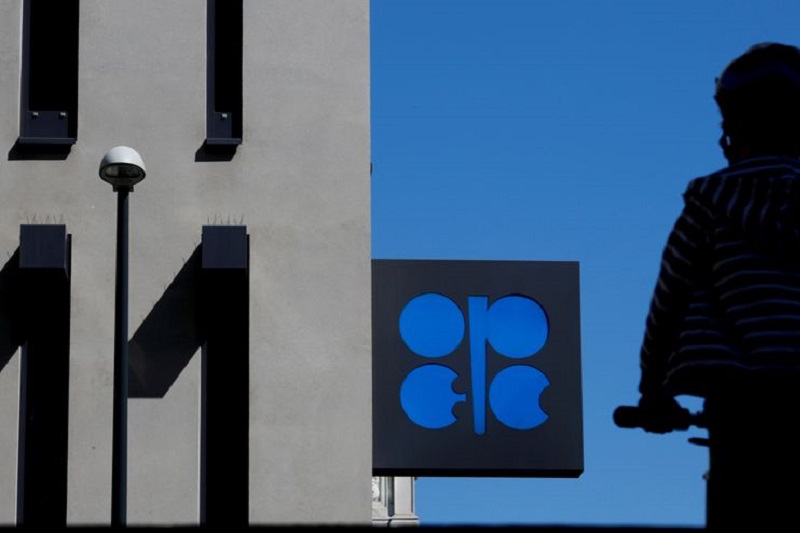By Muyu Xu, Joyce Lee and Ahmad Ghaddar
SINGAPORE/SEOUL/LONDON (Reuters) – Surprise new cuts to the OPEC+ group’s output targets could push oil prices towards $100 a barrel, setting the scene for another clash with the West grappling with higher interest rates, analysts and traders said on Monday.
The decision signals unity within OPEC+ despite Washington’s pressure on its Gulf allies to weaken their ties with Moscow, while also undermining the West’s efforts to limit Russia’s oil income.
Oil prices jumped over 6% on Monday after the Organization of the Petroleum Ex porting Countries and their allies including Russia announced on Sunday further production target cuts of about 1.16 million barrels per day (bpd) from May through the rest of the year.
GRAPHIC – Surprise production cuts
https://www.reuters.com/graphics/GLOBAL-OIL/egpbyjrylvq/chart.jpg
The pledges will bring the total volume of cuts by the group known as OPEC+ since November to 3.66 million bpd according to Reuters calculations, equal to 3.7% of global demand.
OPEC+ had been expected to hold output steady this year, having already cut by 2 million bpd in November 2022.
Saudi Arabia said its voluntary output cut was a precautionary measure aimed at supporting market stability.
Russian Deputy Prime Minister Alexander Novak said interference with market dynamics was one of the reasons behind the cuts.
The International Energy Agency said the cuts risk exacerbating a strained market and pushing up oil prices amid inflationary pressures.
“The new cuts are underpinning that the OPEC+ group is intact and that Russia is still an integral and important part of the group,” SEB analyst Bjarne Schieldrop said.
Rystad Energy said it believed the cuts will add to tightness in the oil market and lift prices above $100 a barrel for the rest of year, possibly taking as high as $110 this summer.
UBS also expects Brent to reach $100 by June, while Goldman Sachs (NYSE:) raised its December forecast by $5 to $95.
Goldman said strategic petroleum reserve (SPR) releases in the United States and in France, due to ongoing strikes, as well as Washington’s refusal to refill its SPR in the 2023 fiscal year, may have prompted the OPEC+ action.
Higher prices will likely spell more income for Moscow to fund its expensive war in Ukraine, upsetting Saudi-U.S. relations further, Schieldrop said.
“The U.S. administration may also argue that higher oil prices will counter its efforts to put out the inflation fire,” he added.
While the higher oil prices will spell bad news for the European Central Bank as it tries to bring down inflation, it is unlikely to fundamentally alter the policy outlook for now.
An official at a South Korean refiner said the cut was “bad news” for oil buyers and OPEC was seeking to “protect their profit” against concerns of a global economic slowdown.
The supply cut would drive up prices just as weakening economies depress fuel demand and prices, squeezing refiners’ profits, the South Korean refining official and a Chinese trader said.
Both declined to be identified as they were not authorised to speak to media.
Tighter OPEC+ supply will also be negative for Japan as it may further boost inflation and weaken its economy, said Takayuki Honma, chief economist at Sumitomo Corporation Global Research.
“Producing countries apparently want to see oil prices rise to $90-$100/bbl, but higher oil prices also mean higher risk of economic downturn and sluggish demand,” he added.
Purchases by China, the world’s top crude importer, are however expected to hit a record in 2023 as it recovers from the COVID-19 pandemic, while consumption from No.3 importer India remains robust, traders said.
With higher prices and less supply of Middle East sour crude, China and India may be pushed to buy more Russian oil, boosting revenue for Moscow, said the Indian refining official, who declined to be named as he was not authorised to speak to media.
The rise in Brent prices could push Urals and other Russian oil products to levels above the caps set by the Group of Seven Nations (G7) aimed at curbing Moscow’s oil revenue, he said.
GRAPHIC – OPEC+ production cut effect on oil price
https://www.reuters.com/graphics/GLOBAL-OIL/byprlmgxlpe/chart.png
ALTERNATIVES
Refiners in Japan and South Korea said they are not considering taking Russian barrels due to geopolitical concerns and may look for alternative supply from Africa and Latin America.
“Japan could seek more supply from the United States, but bringing the U.S. oil through the Panama Canal is expensive,” Sumitomo’s Honma said.
Traders are also watching for a response from the U.S., which called OPEC+’s move inadvisable.
“In essence, the purpose of this massive surprise production cut is mainly to regain market pricing power,” the Chinese trader said.
Read the full article here










